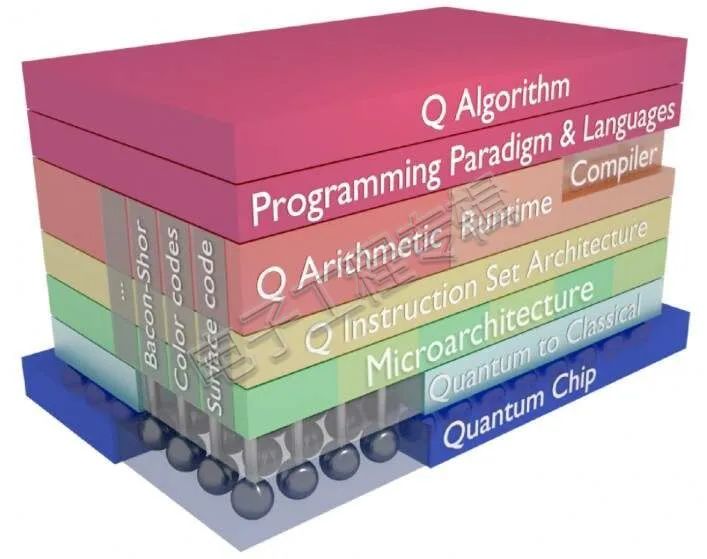Skip to content
In 2016, the first batch of quantum computers realized programming with advanced user interfaces, enabling the execution of any quantum algorithm. These quantum computers were designed with a small scale, possessing only a limited number of qubits.
However, large companies like IBM, Google, and Microsoft, as well as some startups, share a common ultimate goal: to create larger-scale, commercially viable quantum computers in the near future.
Quantum computers are more like components of a heterogeneous multi-core computer, where classical processors interact with multiple accelerators such as FPGAs, GPUs, and quantum coprocessors. Figure 1 illustrates the hierarchical structure of a quantum computer system stack.
Figure 1: Quantum Computer System Stack Diagram. (Image source: Towards a Scalable Quantum Computer)
Delft University of Technology in the Netherlands is currently working towards achieving programmable silicon quantum chips, bringing quantum computers closer to success.
How to Power These Quantum “Monsters”?
As there are no mature quantum computers available yet, we will start our discussion from the power needs of supercomputers, then move on to the newly emerging Exascale computers, and finally discuss the power requirements of quantum computers. The challenges faced by power management designers will soon transition from Exascale computers to quantum computers, which will present unique challenges in power management. However, powering Exascale computers will lay the foundation for powering quantum computers.
Supercomputers are often used for modeling and simulating complex dynamic systems that are too costly to physically demonstrate or impractical. Supercomputers can greatly assist scientists in exploring the evolution of the universe, biological systems, weather forecasting, and even renewable energy. Currently, the latest and fastest generation of supercomputers is the Exascale supercomputer.
Exascale supercomputers represent the next generation of supercomputing, capable of improving the simulation of complex processes across various fields including medicine, biotechnology, advanced manufacturing, energy, materials design, and astrophysics. These supercomputers can execute computational tasks for these applications faster and provide higher clarity.
Currently, the world’s most energy-consuming supercomputer is Tianhe-2 in Guangzhou, China, requiring 18MW of power, while the Exascale Tianhe-3 will need even more power. For reference, a typical hydroelectric dam in the United States can produce approximately 36MW of power.
Cray and AMD are collaborating to build the Frontier supercomputer for the U.S. government. It will provide 1.5 exaflops of raw processing power, equating to 1.5 quintillion calculations per second, and is expected to be operational by 2021, becoming the fastest Exascale supercomputer in the world (as shown in Figure 2).
Figure 2: Frontier Exascale Supercomputer. (Image source: U.S. Department of Energy/Oak Ridge National Laboratory)
This type of computer will significantly advance medical progress, improving the lives of billions globally. They can quickly access and analyze medical records, genetics, and environmental factors, tailoring medical solutions for individuals. Moreover, these computers possess incredible processing speeds, making them suitable for developing precise drugs to combat cancer.
Vicor Collaborates with PEZY Computing
I learned that Vicor is collaborating with PEZY Computing, so I reached out to my friend Robert Gendron, Vice President of Product Marketing and Technical Resources at Vicor, to discuss how to optimally power ultra-high-speed, high-power processors.
When I mentioned quantum computers, Gendron recalled IBM’s





